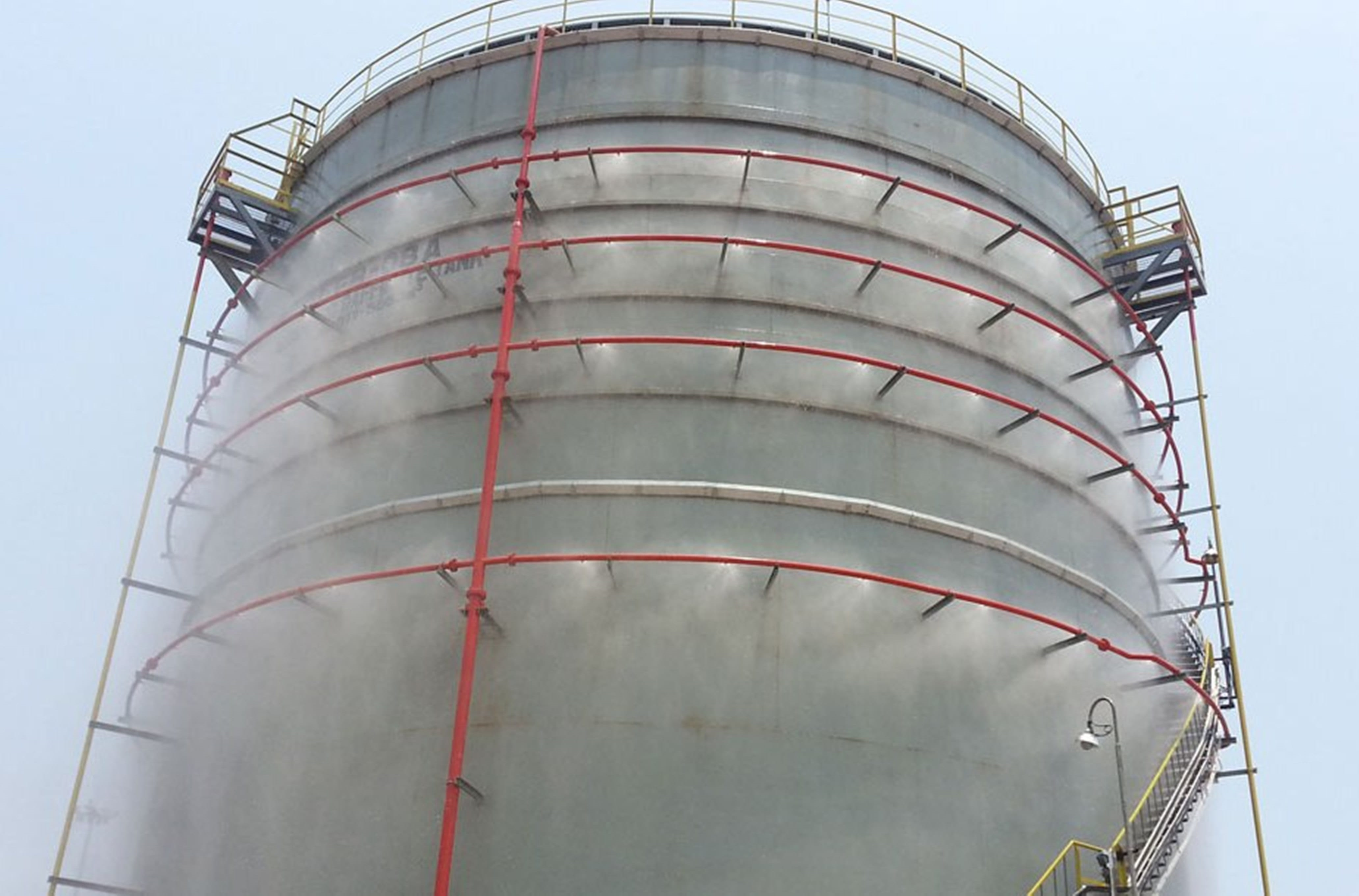Medium Velocity Water Spray System
Medium Velocity Water Spray System
The Importance of Medium Velocity Water Spray System for Firefighting
Fire safety is an essential aspect of any industrial, commercial, or residential setting. When it comes to protecting critical infrastructure and life safety, it's essential to have fire protection systems that are both reliable and effective. Among the various firefighting systems, the Medium Velocity Water Spray System (MVWS) stands out as a highly effective and versatile solution. MVWS systems are particularly beneficial in environments where the risk of fire is high, such as chemical plants, power plants, and oil refineries.

At Angel Safety Consultants, we specialize in providing advanced fire protection solutions, including Medium Velocity Water Spray Systems, tailored to meet the specific needs of our clients. This article explores the importance of MVWS in firefighting, how it works, its advantages, and its role in safeguarding life and property from fire hazards.
What is a Medium Velocity Water Spray System?
A Medium Velocity Water Spray System (MVWS) is a firefighting system that uses nozzles to deliver water at medium velocity (typically between 2-8 meters per second) to suppress fires. These systems are designed to spray a fine mist of water over a wide area, effectively cooling the fire and preventing it from spreading. The water droplets in an MVWS are larger than those in high-velocity systems but smaller than those in traditional sprinklers, allowing for better coverage and quicker response times.
MVWS is highly effective for controlling fires in high-risk environments, particularly those involving combustible liquids, flammable gases, or high-temperature environments. This system is commonly used in chemical processing plants, oil refineries, offshore oil rigs, marine applications, and electricity generation facilities, where traditional fire protection measures might not be adequate.
How Does a Medium Velocity Water Spray System Work?
An MVWS operates by spraying water at medium pressure and velocity through a network of strategically placed nozzles. These nozzles are typically mounted on piping that is connected to a water supply and controlled by a valve. When the system is activated, water is released from the nozzles and directed over the fire-affected area. The fine water droplets from the system cool the fire and surrounding areas, thereby inhibiting the spread of the flames.
The basic components of an MVWS include:
1. Water Supply :
The source of water for the system. This can be a dedicated water storage tank, an external supply, or a reservoir that ensures a steady water flow when needed.
2. Pump and Piping :
A network of pumps and pipes delivers the water under pressure to the nozzles. The pressure is controlled to ensure a steady spray without damaging sensitive equipment or structures.
3. Nozzles :
These are specifically designed to spray water at medium velocity. The nozzles are positioned strategically throughout the fire risk area to ensure the optimal coverage of the facility.
4. Control Valve :
This valve regulates the flow of water through the system and is usually connected to the fire detection system. The control valve automatically activates when a fire is detected.
5. Fire Detection System :
These systems, often integrated with heat, smoke, or flame detectors, are responsible for identifying the presence of a fire and triggering the MVWS to discharge water.
6. Alarm System :
Once the MVWS is activated, an alarm system sounds to alert the personnel in the facility of the emergency, enabling them to take further actions like evacuating or calling emergency services.
Why is a Medium Velocity Water Spray System Important?
1. Effective Fire Suppression for Hazardous Areas :
In industries such as chemical processing, oil refining, and petrochemical production, the risk of fire is heightened due to the presence of flammable materials. Fires in these areas can escalate quickly and may lead to explosions if not controlled promptly. The MVWS provides an effective solution by delivering water at medium pressure and velocity, ensuring that the fire is suppressed quickly and effectively before it spreads.
2. Protection for Class B and C Fires :
MVWS is particularly effective for Class B (flammable liquids and gases) and Class C (electrical) fires. These fires often occur in environments where there are hazardous materials, such as petroleum, chemicals, or electrical installations. The medium velocity of the water spray prevents the spreading of flammable liquid fires, while the fine mist helps to control electrical fires without causing damage to sensitive equipment.
3. Minimizes Collateral Damage :
One of the significant advantages of using an MVWS is its ability to minimize collateral damage. Unlike traditional fire suppression systems that use large volumes of water, MVWS uses a controlled spray that covers a wide area without causing excessive water damage. This helps protect valuable equipment and materials in facilities, reducing downtime and repair costs in the event of a fire.
4. Cooling Effect and Prevents Re-ignition :
A critical aspect of MVWS is its cooling effect. The fine mist of water helps to absorb heat from the fire and the surrounding environment. This cooling process significantly reduces the temperature of both the fire and the nearby materials, which is crucial for preventing re-ignition. In high-temperature environments, the quick cooling action of the MVWS helps to stabilize the situation and prevent the fire from escalating further.
5. Versatility in Various Applications :
Medium Velocity Water Spray Systems are highly versatile and can be tailored to suit the specific fire risks of different industries. These systems are suitable for a wide range of applications, from oil and gas plants to chemical factories, electrical substations, and warehouse storage facilities. They are particularly useful in areas where a large volume of water is required but where high-velocity sprays would cause unnecessary damage.
6. Cost-Effective and Low Maintenance :
Compared to other specialized fire suppression systems, MVWS is relatively cost-effective. It uses water as the primary extinguishing agent, which is often more readily available and less expensive than chemicals or foams. Additionally, the system’s design is simple and requires minimal maintenance. Routine checks and inspections are sufficient to keep the system functioning effectively, ensuring reliable protection in the event of a fire.
7. Quick Response Time :
The response time of the MVWS is another critical factor in its effectiveness. As soon as the fire detection system is activated, the MVWS immediately releases water, allowing for fast intervention. This quick response is essential for controlling fires before they grow out of control and cause significant damage.
Best Practices for Implementing Medium Velocity Water Spray Systems
1. Regular Maintenance and Testing :
Periodic maintenance and testing of the system ensure that it operates optimally during an emergency. Regular inspection of the nozzles, pumps, and valves will help avoid malfunction and ensure readiness.
2. Customized System Design :
Each facility has unique fire risks, so it is important to design the MVWS to meet specific needs. A thorough fire risk assessment should be conducted to determine the best placement of nozzles and equipment to achieve maximum coverage.
3. Integration with Other Safety Systems :
The MVWS should be integrated with other fire protection systems such as fire alarms, emergency exits, and evacuation protocols. This ensures that the system functions seamlessly with other emergency measures.
4. Employee Training :
It is essential for employees to be familiar with how the MVWS works and what to do in the event of a fire. Training and drills should be conducted regularly to ensure that staff are well-prepared to handle emergencies.
5. Fire Risk Assessment :
A comprehensive fire risk assessment should be conducted to identify the potential sources of fire and determine how the MVWS can be used to mitigate these risks. This will ensure that the system is implemented where it is needed the most.
The Medium Velocity Water Spray System (MVWS) is an essential fire protection solution for industries at high risk of fire hazards, particularly in environments where flammable liquids, gases, or sensitive electrical systems are involved. Its ability to suppress fires quickly and effectively, minimize water damage, and prevent re-ignition makes it an invaluable part of a comprehensive fire safety strategy. At Angel Safety Consultants, we specialize in providing customized MVWS solutions to meet the specific needs of our clients. With our expertise, we ensure that your facility is well-protected against fire risks. For more information on how we can assist with your fire protection needs, contact us today.
